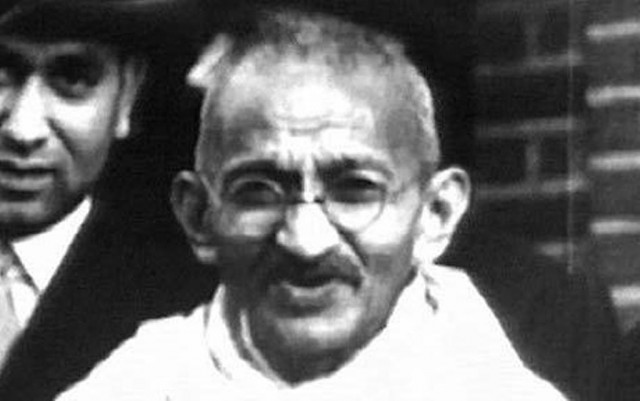
“People see Gandhi in different lights -— his image having been manipulated by different groups to their own understanding and ideas. The fact of the matter is that Gandhi was a skilful operator and tactician as well as a champion of civil rights,” said Dr Sarah Ansari at the Aga Khan University’s Sixth Sense Forum on Monday.

A professor of history at the Royal Holloway, University of London, Dr Ansari’s address was aimed to discuss the issue of Gandhi’s image as a saint and a politician. “Working out what he stood for is still a mystery,” said Dr Ansari. Citing the example of his way of dressing, Dr Ansari explained that the attire alone bespoke his cleverly crafted image — the ultimate weapon in his struggle against British imperialism.
The iconic garb of an Indian loin cloth was deliberately chosen to show that the Indians did not need the West, claimed Dr Ansari. “His clothes represented his political identity,” she said. “A consummate politician, Gandhi was clever and an adept manipulator. He mobilised his fellow Indians to challenge the might of the British Empire.”
Though he knew his detractors regarded him primitive and indecent, Gandhi dressed as he did so he could identify with the poorest Indians for whom there was often a language barrier. “He used how he dressed to convey his nationalist message to all Indians,” claimed Dr. Ansari. “He never claimed sainthood. Rather, his rejection of the materialism of the West was part of his self-rule ideology. By wearing traditional clothes, woven in India, the country, in his opinion, could become self-sufficient. He was trying to show what type of nation India should become,” explained Ansari.
Further into the discussion, Ansari went on to explain how Gandhi was a “man of his time”. He was educated in Britain and worked from 1893 to 1915 in South Africa. He understood how the British Raj worked and what made the Indian people tick.
“He was rooted in Indian traditions but also drew from post-enlightenment theories. He was especially influenced by Ruskin and Tolstoy,” claimed Ansari. “He knew that the [Indian National] Congress had to move forward, adapt with the changing times. He was the architect of a new Congress constitution that paralleled the British Empire’s administration.”
“He was a maverick, and a maverick is hard to pin down. Some of the things they do, seem strange if not seen through their eyes. Different groups have picked up different aspects of Gandhi.” He was used by Martin Luther King as an inspiration. His non-violence movement was used during the apartheid era in South Africa and is also used by environmentalist groups too.
“With regards to the question, was he a saint or a politician, I believe he was both and more. He left a huge mark, politically and socially,” stated Dr Ansari.
Published in The Express Tribune, February 12th, 2014.


















COMMENTS
Comments are moderated and generally will be posted if they are on-topic and not abusive.
For more information, please see our Comments FAQ